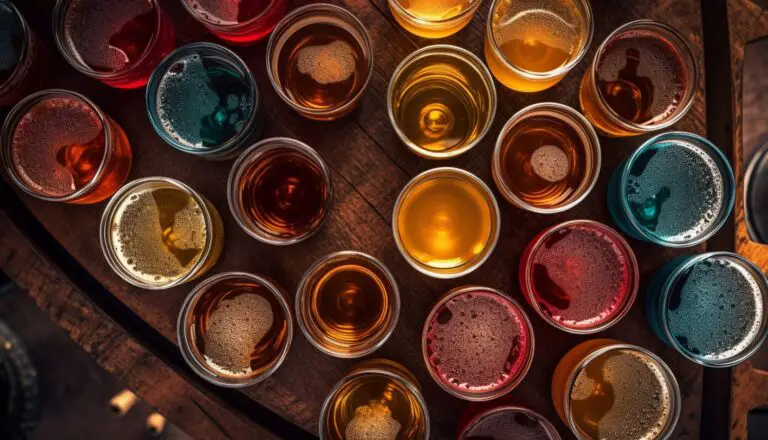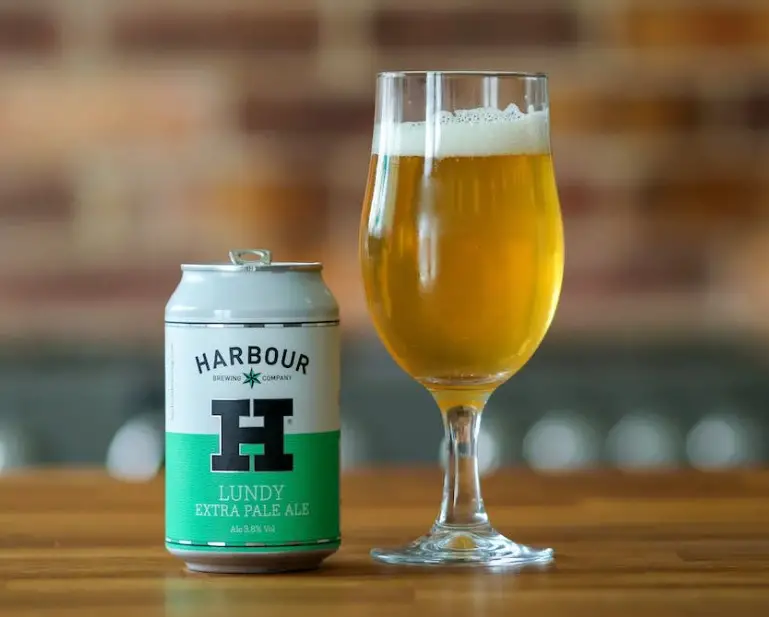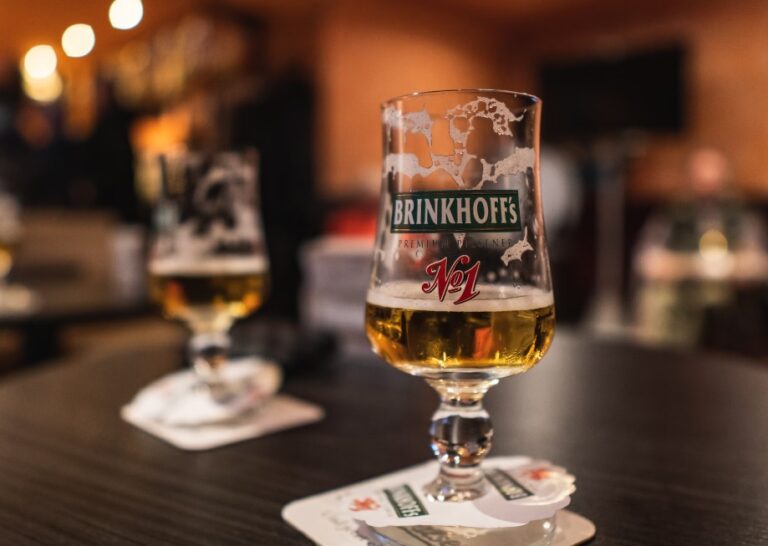Does Ginger Beer Have Quinine?
Quinine is known for its bitterness – but does ginger beer have quinine?
Ginger beer typically does not contain quinine. Unlike tonic water, which is deliberately infused with quinine for its bitter flavor, ginger beer relies on the combination of ginger, sugar, water, and yeast for its distinctive taste.
Quinine is a bitter compound extracted from the bark of the cinchona tree and is commonly associated with tonic water due to its historical use to combat malaria.
Follow us on Instagram!
Quinine in Beer? Where Does This Myth Come From?
The misconception that ginger beer contains quinine likely arises from the association of quinine with tonic water, a beverage known for its bitter taste and historical use as an antimalarial remedy. People may generalize this association to other carbonated drinks, leading to the belief that ginger beer also contains quinine.
Additionally, variations in ginger beer recipes and the introduction of new, flavored beverages may contribute to the confusion.
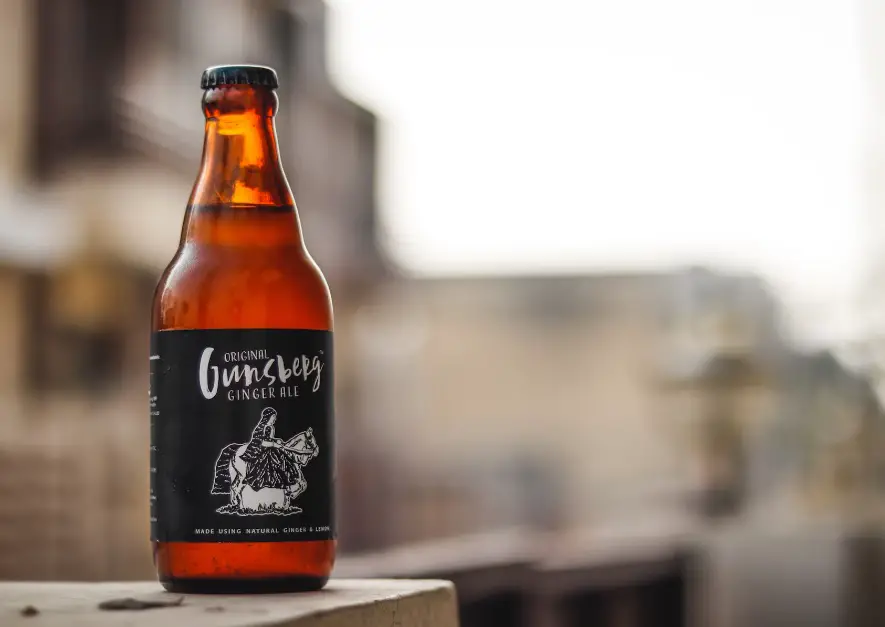
What Is Quinine? Why Is Quinine Important? Where Does Quinine Come From?
Quinine is a natural alkaloid with a bitter taste that is derived from the bark of the cinchona tree. Historically, quinine has played a crucial role in medicine, particularly as a treatment for malaria. Due to its antimalarial properties, quinine was widely used in the past to combat the disease, primarily in tropical regions where malaria was prevalent.
The importance of quinine lies in its ability to effectively treat and prevent malaria, a life-threatening disease caused by parasites transmitted through mosquito bites. Quinine works by disrupting the life cycle of the malaria parasite in the human body.
Natural sources of quinine include the bark of the cinchona tree, which is native to the Andean region in South America. The bark contains varying amounts of quinine alkaloids, and historically, it was harvested for its medicinal properties. Today, synthetic methods are also employed to produce quinine for medicinal use.
In addition to its medicinal use, quinine is found in certain beverages, most notably tonic water. Tonic water originally contained quinine as a way to make it more palatable for individuals in malaria-prone areas, but today, commercial tonic water often uses a synthetic form of quinine due to regulatory considerations.
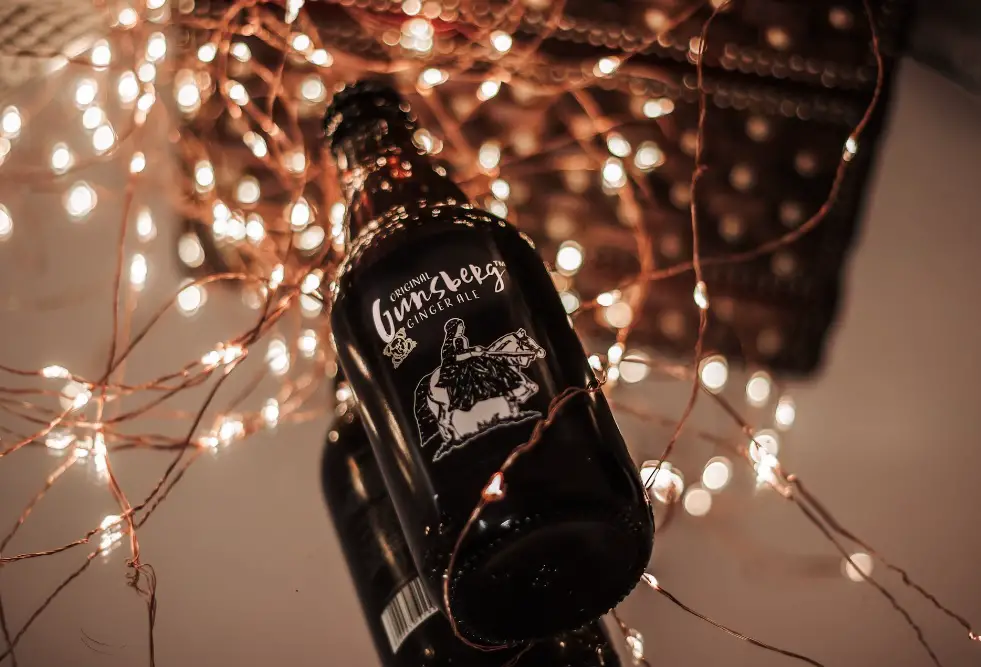
Quinine In Beverages
Traditional use in tonic water
Quinine has a long-standing association with tonic water, where its bitter taste served a dual purpose. Historically, tonic water was used as a prophylactic against malaria due to quinine’s antimalarial properties. British colonizers in tropical regions would mix quinine with water, sugar, and carbonation to create tonic water, allowing them to consume the bitter medicine more easily.
Over time, tonic water evolved into a popular mixer for cocktails, with the bitterness of quinine adding a distinctive flavor to drinks like the classic gin and tonic.

Presence in other beverages
While tonic water is the most recognized beverage containing quinine, other drinks may also incorporate this compound. Some artisanal and specialty beverages, including certain sodas and herbal infusions, may use quinine for its unique bitter flavor profile.
Make sure to check labels and ingredient lists to identify the presence of quinine in different beverages, especially if you are seeking or avoiding the bitterness.
Health considerations and benefits
Quinine, when consumed in moderate amounts as found in beverages like tonic water, is generally considered safe for most individuals. However, excessive consumption may lead to side effects, such as cinchonism, characterized by symptoms like nausea, vomiting, and headaches.
Moreover, individuals with certain health conditions or those taking specific medications should consult with healthcare professionals regarding their quinine intake.
While quinine has a historical connection to malaria treatment, the concentrations in beverages are typically too low to provide significant medicinal benefits.

What’s the Link Between Ginger Beer and Quinine?
Common misconceptions
There’s a common misconception that ginger beer contains quinine, likely stemming from the association of quinine with certain carbonated beverages like tonic water.
However, it’s crucial to clarify that traditional ginger beer recipes do not include quinine as a standard ingredient. Ginger beer is primarily crafted from ginger, sugar, water, and yeast, offering a spicy and refreshing flavor without the bitterness associated with quinine-containing beverages.
Research on quinine in ginger beer
While traditional ginger beer recipes exclude quinine, there may be variations or commercially produced ginger beers that include it for a specific flavor profile. Research on the presence of quinine in ginger beer can help consumers make informed choices about their beverage preferences.
Variations in ginger beer recipes
Ginger beer recipes can vary widely, with some incorporating additional ingredients for unique flavors. While quinine is not a standard component of traditional ginger beer, innovative recipes may experiment with various botanicals and herbs, including quinine, to create distinct and novel beverages.

Wrapping It Up
In conclusion, traditional ginger beer recipes do not include quinine. The misconception likely arises from the association with quinine-containing drinks like tonic water. While some ginger beer variations may experiment with different ingredients, it’s important for consumers to check labels for accuracy.

I am a young architect with a passion that goes beyond blueprints… it’s beer! undertherosebrewing.com is more than just a blog, it’s a manifestation of my lifelong dream to explore, read, and learn everything about beer. Join the blog on this unfiltered and genuine adventure into the heart of beer culture. Cheers!

